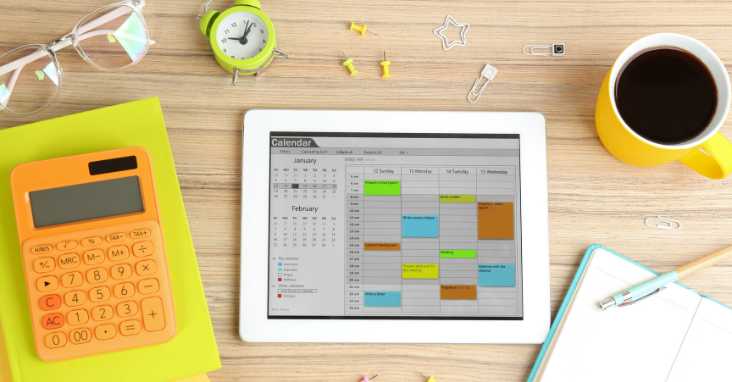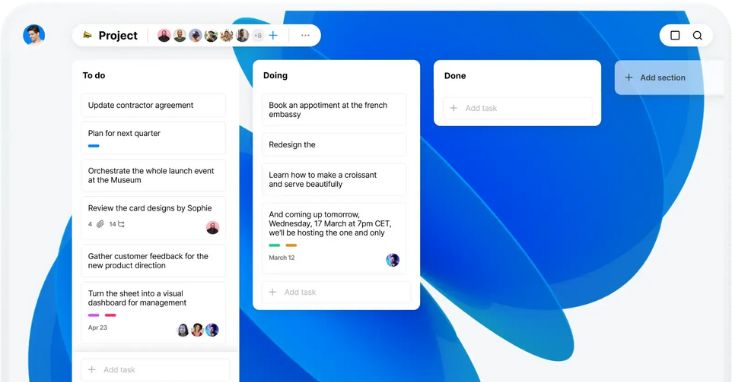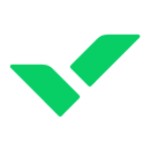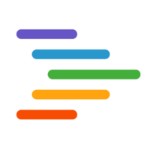In our rapidly evolving digital age, punctuated with spurts of information and endless tasks, keeping oneself organized is more crucial than ever. Being well-organized is synonymous with heightened productivity, ensuring that you’re perpetually in tune with your goals upcoming tasks, and daily tasks. This is where daily planner apps, your digital companions, play a pivotal role. So, the inevitable question arises: the best daily planner apps which is the best daily planner app for you?
In this bustling world, we often find ourselves ensnared in the web of endless responsibilities, juggling various tasks, and trying to keep afloat in the sea of information. The buzzing notifications, the daunting to-do lists, and the relentless rhythm of our digital life can be overwhelming. It’s a relentless pursuit, a chase for efficiency and productivity, the yearning to make the most out of every fleeting second. In this quest to do lists well, having a reliable planner app becomes indispensable.
With the multitude of planner apps available, sifting through to find the one that resonates with your needs can be a daunting endeavor. We are talking about the best daily planner app here, a tool that is poised to be your daily companion, your digital, weekly and monthly confidante, helping you align your aspirations, manage your time efficiently, and stay on top of your game. The best daily planner app here isn’t just about scheduling tasks; it’s about creating a harmonious balance between your professional commitments and personal well-being.
I invite you to join me on a comprehensive journey exploring various planner apps, delving deep into their features, assessing their usability, and weighing their pros and cons, all to help you make an informed decision. By the end of this exploration, my hope is that you’ll find your digital ally, the planner app that aligns your daily schedule tasks and tasks perfectly with your lifestyle and needs, and aids you in the task details elevating your productivity to new heights.
Best planner app choices are abundant, but finding the one that aligns with your needs can unlock unparalleled productivity and organization, helping you balance professional commitments and personal well-being seamlessly.

Assessing Your Needs
Before we plunge into the world of digital planners, it’s imperative to pause and reflect. It’s about introspection regarding what exactly you want your digital companion to do lists accomplish for you. Assessing your needs forms the bedrock on which your choice will rest, and it’s this choice that will either streamline your life or add more chaos to it.
Defining Your Purpose
The first stepping stone in this journey is defining your purpose for a planner app. Why do you need it? The motivations could range from managing your daily weekly and monthly schedule of to-dos, keeping tabs on your long-term goals, or maybe it’s about staying aligned with your appointments. Some might need a planner app that amalgamates calendar features with task management, while others might be seeking a simple, no-frills to-do list app.
Questions to Ask Yourself:
What type of tasks do I need to manage: daily, weekly, or long-term?
Do I need an app focused on professional tasks, personal tasks, or both?
Do I want a planner that includes a calendar, or do I prefer them separate?
Identifying Essential Features
Once the purpose is crystal clear, the next step is to identify the essential features that you cannot compromise on. Are you looking for an app with robust notification features to keep you on your toes, or do you prefer something with collaborative capabilities to sync with your team?
Here, detail is key. Reflect on whether you need features like sub-tasks, file attachments, or the ability to make notes. Some might crave a visually-driven app with vibrant aesthetics and customizable themes, while others might prioritize functionality over appearance.
Questions to Ask Yourself:
Do I need collaboration features to work with a team or share tasks with family members?
How important are aesthetics and customization options to me?
Do I need the ability to attach files, images, and add detailed notes to my tasks?
Considering Usability
Usability is the linchpin that can make or break your relationship with any app. An app can be laden with features, but if it’s not user-friendly, it’s bound to be deserted soon. The ideal app should have an intuitive interface, easy navigation, and it should make the task of organizing your life as straightforward as possible.
Questions to Ask Yourself:
Do I prefer a simple and straightforward interface, or can I handle a steep learning curve for more features?
How quickly can I adapt to the app’s interface and functionalities?
Is the app’s design conducive to quick task entry and management?
Evaluating Compatibility
In the interconnected digital ecosystem we inhabit, compatibility between mobile devices and mobile apps is of paramount importance. Your chosen app should seamlessly sync across all your devices, ensuring that your plans, tasks, and schedules are always at your fingertips, whether you are using mobile app on a smartphone, tablet, or computer.
Questions to Ask Yourself:
Does the app sync in real-time across all my devices?
Is the app available on all the platforms I use, such as iOS, Android, Windows, or Mac?
Can the app integrate with other apps and services I use regularly?
Budget Constraints
Last but not least, ponder over your free and paid plan, and budget. Many planner apps come free but offer premium subscriptions for additional features. Assess whether you are willing to shell out those extra bucks for a free plan or paid plan with enhanced capabilities or if a free version satiates your needs.
Questions to Ask Yourself:
How much am I willing to spend on a planner app?
Do the premium features offer substantial value to justify the cost?
Is there a trial period to test the premium features before making a commitment?
Summary:
Defining Purpose: Understand your motivation behind using a planner app and what you want it to manage.
Identifying Essential Features: List the indispensable features, focusing on aesthetics, functionality, and collaboration capabilities.
Considering Usability: Ensure that the app is user-friendly, intuitive, and easy to adapt to.
Evaluating Compatibility: The app should sync across all your devices and integrate with other apps and services you use.
Budget Constraints: Decide whether you are willing to invest in a premium app or if a free version meets your needs.
Remember, an in-depth understanding of your needs, coupled with clear expectations, lays the foundation for selecting a planner app that truly resonates with you, thereby will boost productivity and paving the way for a more organized, balanced, and productive life.

Top Planner Apps
When the haze around your daily planning app needs and preferences clears up, you’ll find an assortment of planner apps, each buzzing with a unique set of features, strengths, and limitations. Here’s a more extensive look at some of the best daily planner and apps available, allowing you to sift through and select the one that echoes with your lifestyle and needs.

Microsoft To Do
Microsoft To Do is a versatile task management app that stands out for its simplicity and robust features. It lets you create a daily schedule app, to-dos, set reminders, and make notes. It’s a prime choice for those who are looking for seamless integration with Microsoft Office tools.
Key Features:
Integration with Microsoft 365: This allows for smooth coordination between different Microsoft apps.
Task Prioritization: Offers the ability to set priority levels for tasks.
Daily Planner: Features a ‘My Day’ view that shows all tasks due today.
Ideal for: Those who rely heavily on Microsoft Office tools and prefer a simple yet powerful task management productivity app.

Trello
Trello takes visual organization to the next level. It is based on Kanban methodology and is excellent for managing projects and recurring or repetitive tasks. You can create boards (for projects) and cards (for recurring tasks) and organize them as per your needs. It’s especially beneficial for collaborative tasks and projects.
Key Features:
Boards, Lists, and Cards: Allows for meticulous organization of tasks and projects.
Collaborative Features: Enables team members to coordinate and manage projects efficiently.
Customizable Workflows: Offers the ability to set up and customize your workflows according to your project needs.
Ideal for: Teams and individuals who prefer visual project management software and need collaboration features.

Google Keep
Google Keep is for those who are looking for a quick and easy way to jot down notes, create checklists, and set reminders. It is integrated into the Google ecosystem, making it a great choice for those already using Google apps.
Key Features:
Simple Interface: Offers a clutter-free and user-friendly interface for quick note-taking.
Integration with Google Drive: This ensures seamless access and sharing of notes and checklists.
Color-Coded Notes: Helps in organizing and categorizing notes efficiently.
Ideal for: Those who need a straightforward note-taking app integrated with the Google ecosystem.

Evernote
Evernote is a sophisticated app designed for note-taking, organizing, and task management. It goes beyond the basics, offering features like web clipping and the ability to attach PDFs, images, and documents to your notes.
Key Features:
Rich-Text Notes: Allows for the creation of detailed notes with attachments and links.
Web Clipping: Lets you save articles, web pages, and PDFs directly to your notes.
Advanced Search: Offers the ability to search within attachments and handwritten notes.
Ideal for: Those looking for advanced note-taking and organization features, especially for managing a variety of information formats.

Any.do
Any.do is a blend of simplicity and functionality, offering features like simple task management, calendar integration, and even grocery lists. It is tailored for those who crave an all-in-one solution for managing daily tasks in life and work.
Key Features:
All-in-One Planner: Incorporates to-do lists, calendars, and grocery lists.
Voice Entry: Allows adding tasks using voice commands.
Daily Planner: Features a ‘Today’ view to keep track of all activities and tasks due.
Ideal for: Those who need an all-encompassing mobile app, easy to use interface to manage different aspects of daily life.
Summary:
Microsoft To Do: Best for individuals preferring a simple, robust, and Microsoft-integrated task management solution.
Trello: Suitable for visual thinkers and teams needing a collaborative and customizable project management tool.
Google Keep: Ideal for users looking for a simple, Google-integrated note-taking and checklist app.
Evernote: Perfect for those who require advanced note-taking and organizing capabilities with a variety of information formats.
Any.do: Optimal for people who desire a multifunctional app to manage diverse aspects of their lives.
Selecting the right planner app from this refined array involves aligning the app’s core features with your key needs and preferences, allowing you to navigate your world with enhanced efficiency boost productivity and organization.

Features to Look For
Embarking on the journey to find the perfect planner app involves more than just a glance at the user interface or a look at the price tag. It’s about delving into the functionalities and features that truly matter and align with your needs. Below are some nuanced details about the features that can make a monumental difference in your user experience and the app’s overall utility.
Customization Options
A truly effective planner app lets you tailor your experience to your unique needs. It should offer a plethora of customization options allowing you to alter themes, modify layouts, and adjust notification settings. This way, you can create an environment that resonates with your aesthetic preferences and working style.
Details to Consider:
Themes and Layouts: Can you modify the app’s appearance to suit your taste and preference?
Customizable Notifications: Are you able to alter notification tones, frequency, and types to avoid distraction?
Personalizable Dashboards: Can you change the dashboard view to showcase the information you deem most important?
Collaboration Capabilities
If working with teams or sharing tasks is your priority, collaboration capabilities become indispensable. An app with enhanced collaborative features allows seamless sharing of tasks across multiple calendars, full time tracking complete tasks, real-time updates assign tasks, and efficient communication of group tasks, fostering a productive working environment.
Details to Consider:
Task Sharing: Is it possible to share tasks and updates with team members or family easily?
Real-Time Updates: Does the app provide instantaneous updates and modifications made by collaborators?
Communication Channels: Are there in-built communication features like comments or chats for instantaneous discussions?
Seamless Integration
Integration is the linchpin of efficient digital organization. Your chosen planner app should flawlessly integrate with other apps and platforms you use even your daily chores, ensuring a seamless flow of information and minimizing the hassle of switching between apps.
Details to Consider:
Cross-Platform Availability: Is the app available and syncs across all the devices and operating systems you use?
Third-Party App Integration: Does the app integrate well with other productivity apps, email services, and cloud storage solutions you use regularly?
Real-Time Syncing: Are modifications and entries updated in real-time across all platforms and devices?
User-Friendly Interface
A cluttered and complicated interface can overshadow the most advanced features of mobile apps. An intuitive, user-friendly interface is crucial for quick adaptation and ensures that managing repetitive tasks and planning your day doesn’t become a task in itself.
Details to Consider:
Ease of Navigation: Is navigating through different features and sections of the app straightforward?
Quick Task Entry: Can tasks be quickly added with minimal clicks and screens?
Accessible Help and Support: Is assistance readily available within the app if you encounter issues or have queries?
Advanced Task Management
For those who wish to dive deep into the task management tool, features like sub-tasks assign tasks, task prioritization, and detailed note-taking become pivotal in task manager. These features ensure meticulous organization time tracking of tasks, allowing for a structured approach to completing tasks and achieving goals.
Details to Consider:
Sub-Tasks and Checklists: Can tasks be broken down into smaller, manageable pieces?
Task Prioritization: Is it possible to set priority levels to manage tasks effectively?
Detailed Note-Taking: Can detailed notes, attachments, and links be added to tasks for comprehensive understanding?
Summary:
Customization Options: Look for apps offering extensive personalization of themes, notifications, and dashboards to suit your preferences.
Collaboration Capabilities: Opt for apps with advanced task-sharing, real-time updates, and communication features if teamwork is essential.
Seamless Integration: Choose an app that integrates effortlessly with your devices and other apps for a smooth user experience.
User-Friendly Interface: A simple, intuitive interface is crucial for ease of use and quick adaptation.
Advanced Task Management: Consider apps offering detailed task management features for meticulous organization and planning.
Scrutinizing these key features tasks, and aligning them with your requirements will pave the way for a planner app that not only meets your expectations but also elevates your daily planning, and organizational endeavors to new heights.

Premium vs Free: Navigating the Choices
In the sea of planner apps available, the dilemma of choosing between premium and free versions is a common conundrum. Each comes with its own set of advantages and limitations, and understanding these can significantly impact your experience and the utility you derive from the app. So, let’s explore this dichotomy in detail, helping you navigate your options more adeptly.
Free Versions
Free daily planner apps often are tempting, especially when you are just starting your organizational journey and are unsure about your exact needs and preferences. These versions of free daily planner apps will usually offer basic functionalities, allowing users to experience the daily schedule app that’s core features without any financial commitment.
Advantages:
Risk-Free Exploration: You can explore different apps and their features without any monetary investment, providing a sense of the app’s utility and interface.
Basic Functionality: Offers the essential features needed for planning and organization, making it suitable for users with straightforward needs.
No Financial Commitment: Ideal for those who are budget-conscious and not willing to spend on additional features they might not use.
Limitations:
Limited Features: The range of features is usually restricted, and advanced functionalities are locked behind a paywall.
Advertisements: Free versions often come with ads, which can be distracting and can detract from the user experience.
Limited Support and Updates: Customer support and regular app updates may not be a priority, potentially impacting the app’s reliability and security.
Premium Versions
For users whose organizational needs are more intricate and who desire advanced features and a more personalized experience, premium versions are the way to go. These versions unlock a suite of advanced functionalities and customization options, usually providing a more seamless and enriched user experience.
Advantages:
Advanced Features: Premium versions grant access to a broader and more advanced set of features, enhancing the app’s utility and customization.
Ad-Free Experience: The absence of advertisements makes for a smoother and more focused user experience.
Priority Support and Updates: Premium users often receive priority customer support and regular updates, ensuring the app’s reliability and security.
Limitations:
Cost: The additional features and benefits come at a price, which might not be justifiable for every user.
Overwhelming Options: The plethora of features and customization can be overwhelming for some users, especially those who prefer simplicity.
Commitment: Opting for a premium version often involves a commitment, usually in the form of a subscription, which might not suit everyone’s preferences.
Trial Periods and Money-Back Guarantees
Many apps offer trial periods or money-back guarantees for their premium paid version versions. This allows users to explore the advanced features without risk and make an informed decision about whether the premium paid version is worth the investment.
Considerations:
Duration: How long is the trial period, and is it sufficient to explore and understand the app’s advanced features?
Access: Does the trial provide access to all premium features, allowing for a comprehensive evaluation?
Terms: Are the terms of the trial period and money-back guarantee clear and fair?
Summary:
Free Versions: Suitable for risk-free exploration and basic functionality with no financial commitment but comes with limited features, advertisements, and potentially limited support.
Premium Versions: Ideal for users seeking advanced features, an ad-free experience, and priority support but involves cost and can be overwhelming due to extensive options.
Trial Periods and Money-Back Guarantees: Provide risk-free exploration of premium features, helping in making informed decisions.
When navigating between premium and free planner apps, reflect on your organizational needs, preferences, and willingness to commit. Weighing the advantages against the limitations will aid in making a choice that harmoniously aligns with your lifestyle and planning objectives.

Conclusion
Selecting the best planner app is akin to choosing a reliable partner in your journey towards enhanced productivity and organized living. The ideal weekly planner app should harmonize with your lifestyle, create recurring tasks that resonate with your preferences, have unlimited tasks, and aid in your task manager balancing your professional and personal life seamlessly.
This exploration aimed to illuminate the various facets of the best weekly planner app or best daily planner apps, delving into their features, usability, and adaptability. We traversed through Microsoft To Do’s versatility, Trello’s visual-centric approach, and Google Keep’s simplistic design, among others, each offering a unique blend of features and experiences. It’s crucial to weigh all the apps’ pros and cons, assess the features, and evaluate your needs meticulously before making a choice for best daily or best weekly planner app.
Remember, the journey towards unparalleled productivity is intensely personal and ever-evolving. Keep reassessing your needs daily weekly and monthly too, stay open to trying new tools, and most importantly, find the balance that suits you best in this dynamic digital realm.
Key Points:
The ideal planner app should align with your lifestyle and preferences.
Assessing features, usability, and adaptability is crucial.
The journey towards productivity is personal and ever-evolving.

FAQs
Why is it important to choose the right planner app?
Choosing the right planner app is pivotal as it acts as your best daily planner apps and companion in managing everyday tasks and enhancing productivity in group tasks, ultimately aiding in achieving a balanced life.
Can I use multiple planner apps simultaneously?
Yes, many users find that using a combination of a full calendar view, daily planner app and apps caters to their varied needs more effectively, though it may require more time to manage unlimited tasks across multiple devices.
Do I need to pay for a good planner app?
Not necessarily, many free planner apps offer robust features and functionality. However, premium versions often provide advanced features and an ad-free experience which may be better for you than a free version.
Are all planner apps user-friendly?
User-friendliness varies from app to app. It’s advisable to test the app to see if its interface and features align with your preferences.
Can I sync my planner app across different devices?
Most planner apps offer syncing capabilities for calendar view across various devices, but it’s always good to check the app’s specifications to confirm.
How secure are planner apps?
Security levels depend on the app provider. Always check the app’s privacy policy and user reviews regarding data security.
Do planner apps offer customizable notifications?
Most apps do offer customizable notifications and reminders, but the extent of customization may vary.
Can I share my plans and tasks with others using planner apps?
Many planner apps have sharing and collaborative features that allow you to share your tasks multiple calendars edit tasks, and schedule tasks and plans with others.
Do I need an internet connection to use planner apps?
While many planner apps work offline, an internet connection may be needed for syncing and accessing certain features.
How do I decide which planner app suits me best?
Assess your needs, preferences, and the key features tasks that you require, and try different apps to see which one aligns best with your lifestyle and needs.















